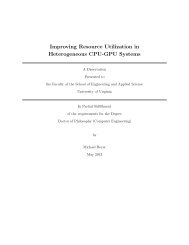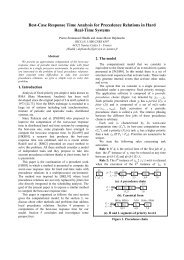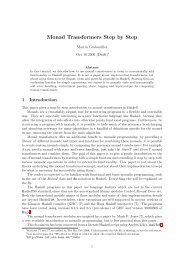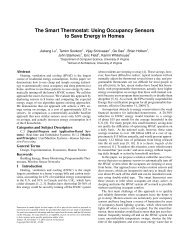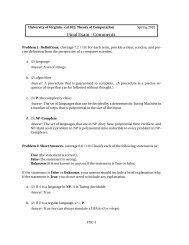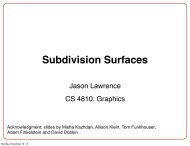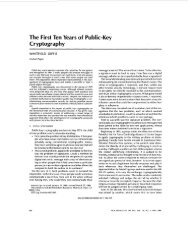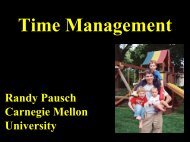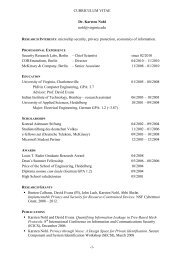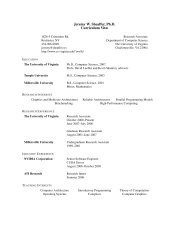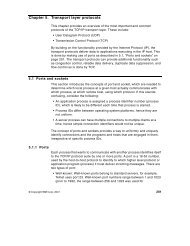Subroutines and Control Abstraction
Subroutines and Control Abstraction
Subroutines and Control Abstraction
Create successful ePaper yourself
Turn your PDF publications into a flip-book with our unique Google optimized e-Paper software.
178 Chapter 8 <strong>Subroutines</strong> <strong>and</strong> <strong>Control</strong> <strong>Abstraction</strong><br />
EXAMPLE 8.66<br />
Subroutine closure<br />
trampoline<br />
Copyright c○ 2009 by Elsevier Inc. All rights reserved.<br />
Calling Sequence Details The calling sequence to maintain the gpc stack is as<br />
follows. The caller<br />
1. saves (into the “local variables <strong>and</strong> temporaries” part of its frame) any callersaves<br />
registers whose values are still needed<br />
2. puts arguments into the build area at the top of the current frame<br />
3. places the static link in register ecx<br />
4. executes a call instruction<br />
The caller-saves registers consist of eax, edx, <strong>and</strong> ecx. Step 1 is skipped if none of<br />
these contain a value that will be needed later. Step 2 is skipped if the subroutine<br />
has no parameters. Step 3 is skipped if the subroutine is declared at the outermost<br />
level of lexical nesting. The call instruction pushes the return address <strong>and</strong> jumps<br />
to the subroutine.<br />
In its prologue, the callee<br />
1. pushes the fp onto the stack, implicitly decrementing the sp by4(oneword)<br />
2. copies the sp into the fp, establishing the frame pointer for the current routine<br />
3. pushes any callee-saves registers whose values may be overwritten by the current<br />
routine<br />
4. pushes the static link (ecx) if this is not a leaf<br />
5. subtracts the remainder of the frame size from the sp<br />
The callee-saves registers are ebx, esi, <strong>and</strong> edi. Registers esp <strong>and</strong> ebp (the sp<br />
<strong>and</strong> fp, respectively) are saved by Steps 1 <strong>and</strong> 2. The instructions for some of<br />
these steps may be replaced with equivalent sequences by the compiler’s code<br />
improver, <strong>and</strong> mixed into the rest of the subroutine by the instruction scheduler.<br />
In particular, if the value subtracted from the sp in Step 5 is made large enough<br />
to accommodate the callee-saves registers, then the pushes in Steps 3 <strong>and</strong> 4 may<br />
be moved after Step 5 <strong>and</strong> replaced with fp-relative stores.<br />
In its epilogue, the callee<br />
1. sets the return value<br />
2. restores any callee-saved registers<br />
3. copies the fp into the sp, deallocating the frame<br />
4. pops the fp off the stack<br />
5. returns<br />
Finally, as in the previous case study, the caller moves the return value, if it is in<br />
a register, to wherever it is needed. It restores any caller-saves registers lazily over<br />
time. <br />
Because Pascal allows subroutines to nest, a subroutine S that is passed as<br />
a parameter from P to Q must be represented by a closure, as described in<br />
Section 3.6.1. In many compilers the closure is a data structure containing the



